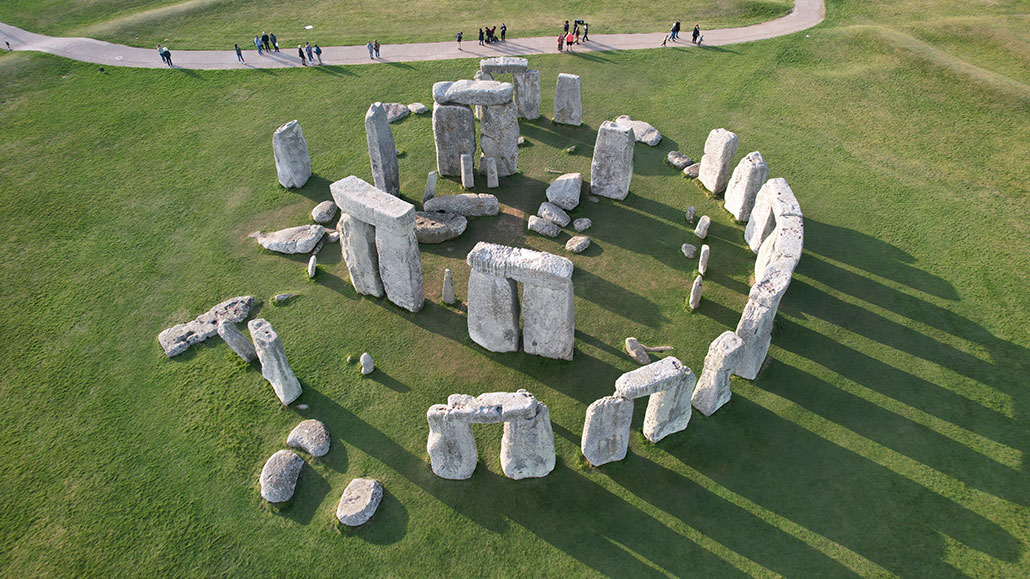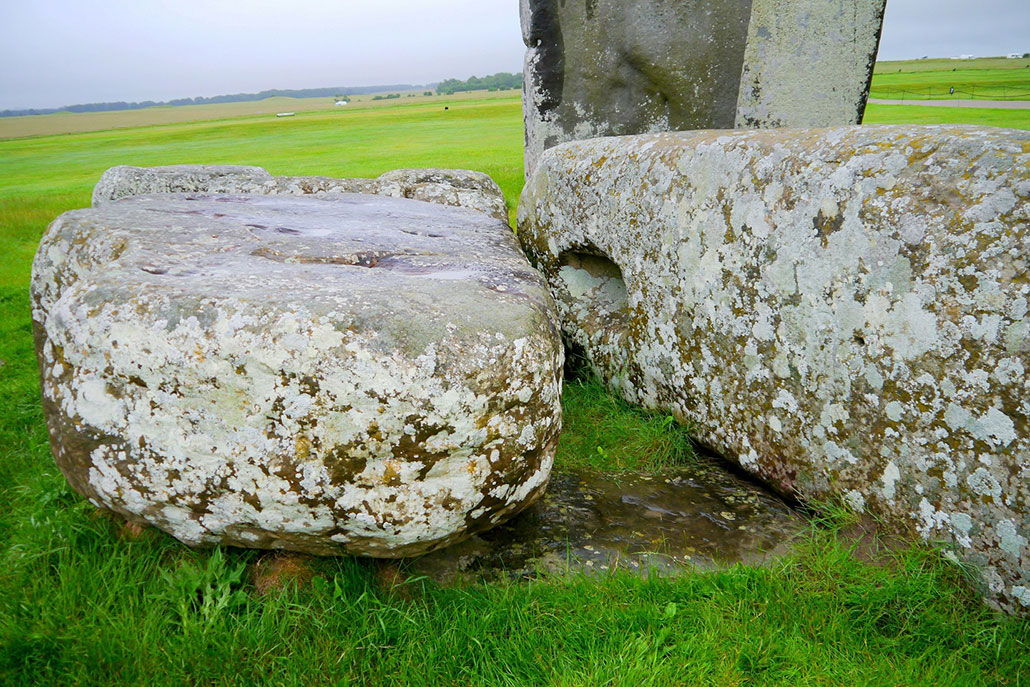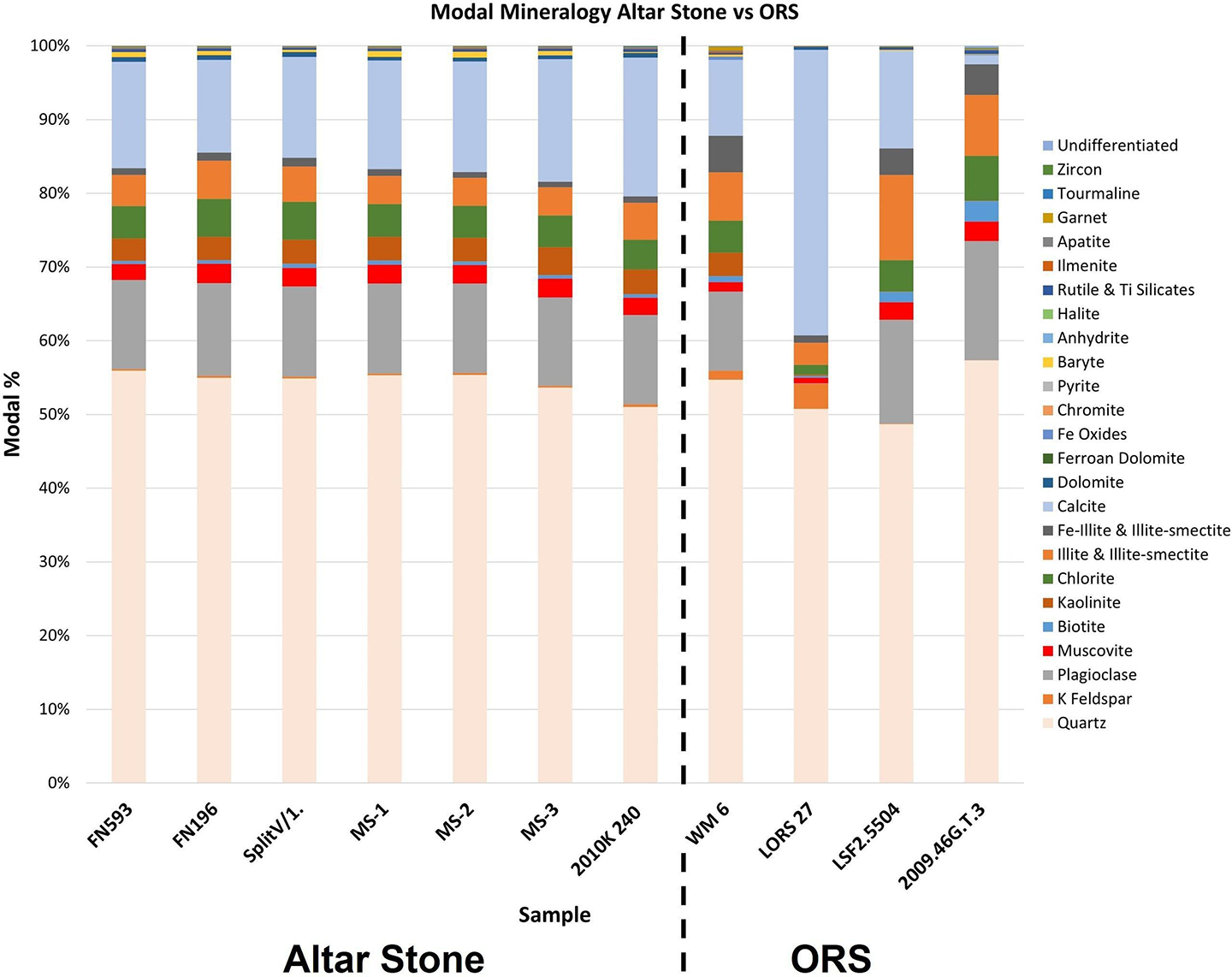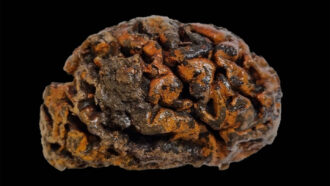Analyze This: Stonehenge’s ‘Altar Stone’ has mysterious origins
The rock’s minerals and chemistry don’t match suspected sources

Scientists have been chasing the source of the Altar Stone, which is near Stonehenge’s center, for a century. A new analysis of 58 potential stone sources across England and Wales hasn’t found a match.
Wirestock/ iStock/Getty Images Plus
Stonehenge is hiding a secret: the source of one of its stones.
Researchers know that the prehistoric circle’s outer stones come from nearby areas in England. But even after a century of sleuthing, the “Altar Stone” near the center of Stonehenge remains shrouded in mystery.
The Altar Stone belongs to a group of Stonehenge building blocks known as the bluestones, which came from areas far from Stonehenge. Researchers have found that some of the bluestones come from as far as 225 kilometers (140 miles) away.
“It’s a massive feat of transport,” says Richard Bevins. He’s an earth scientist at Aberystwyth University in Wales. His team is looking for the source of the Altar Stone. Uncovering the stone’s origins could hint at which ancient groups of people contributed to the monument. Excavations at the stone source locations could also reveal clues about the people living in the Neolithic Period when Stonehenge was built.
The Altar Stone is a flat, rectangular block nearly 5 meters (16.4 feet) long. “It’s a big lump of rock, really is, and it’s much bigger than any of the other bluestones,” Bevins says. Scientists have been chasing the rock’s origins since 1923. An analysis of the Altar Stone’s minerals back then suggested it might have come from a set of rocks in Wales near where other bluestones came from. Bevins and his colleagues decided to revisit the rock’s riddle with modern techniques.

In 2021, the team analyzed the Altar Stone’s chemical makeup using X-rays. The X-ray method revealed that the Altar Stone has high levels of the element barium. But the stone’s ingredients didn’t seem to match the rocks in Wales.
In the new study, the team collected 58 samples from a wider area in England and Wales. Of the 58 sample stones, four had high barium levels similar to the Altar Stone. The team then compared the overall mineral makeup of those four stones with the Altar Stone. But none were a match. The team shared its findings in October 2023 in the Journal of Archaeological Science: Reports.
“Maybe we’ve been looking in the wrong area, and maybe we’ve possibly been looking at rocks of the wrong age,” Bevins says. It’s not clear exactly how old the Altar Stone is. So scientists may need to consider stone sources that are younger than the ones they have looked at so far.

Data Dive:
- Look at the seven samples from the Altar Stone. How do the mineral makeups of these samples compare with each other?
- What is the most common mineral in these samples? What is the range — or spread — of percentages for that mineral?
- What are some of the other minerals in the Altar Stone?
- How do the four Old Red Sandstone samples compare with those of the Altar Stone?
- What minerals do these samples have in common with the Altar Stone?
- Which of the Old Red Sandstone samples looks the most similar to the Altar Stone? Which looks the most different?







